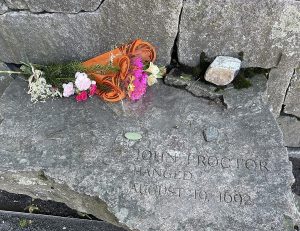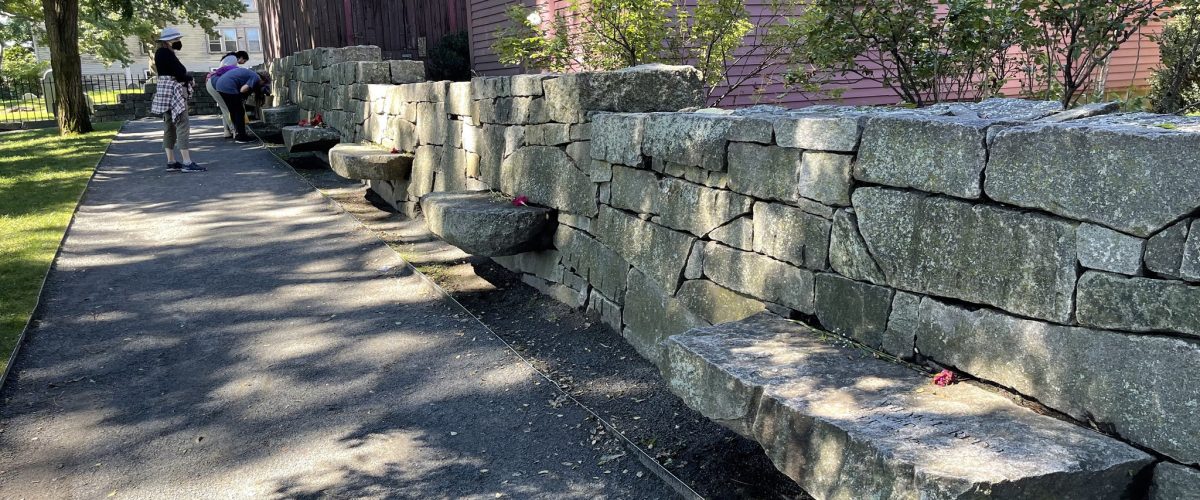Last year my wife and I, on a trip to Maine, included our annual detour to Salem, Mass. It’s a fascinating city just outside Boston, filled with literary and pre-Colonial history.
Quite an industry has grown up around the historic witch trials for which this town is well known and which goes into hyperdrive each September and October. It becomes more of a Gatlinburg of tourists with its focus on witches and spooks and goblins. Unfortunately, such crass commercialization flies in the face of the horrors that occurred there 330 years ago in our fledgling nation.

Joe Westbury
It’s the kind of medieval persecution common in Europe from the fifth to the 15th century. But here it was in the early days of what was to become the United States — and carried out by those who fled religious persecution in the Old World but who brought it with them on steroids to the New World.
Between February 1692 and May 1693, more than 200 people were accused of witchcraft, with 30 found guilty. Of those, 19 — a total of 14 women and five men — were executed by hanging. One other man, Giles Corey, was pressed to death (the Puritan version of being stoned) after refusing to enter a plea; at least five people died in jail.
On this visit, I was unprepared for the impact the Salem Witch Trials Memorial and its simple telling of the story would have on me.
The small memorial is not unlike the massive yet solemn Vietnam Memorial with all its names. In Salem, the outdoor memorial is a three-sided granite wall with benches displaying the names and execution dates of each of the victims.
But it doesn’t stop there; stonework on the ground by the entrance is inscribed with the victims’ pleas of innocence that are interrupted mid-sentence by the wall to symbolize the indifference by the established church to oppression.
 The memorial is located adjacent to the famous Charter Street Cemetery, a spooky setting in its own right. It stands in stark contrast to the polished half-truth myth we have created about the founding of our nation by God-fearing Puritans and Separatists who were fleeing persecution by the Church of England. And, to its credit, it wisely avoids drawing any connection to the ills of a marriage between church and state, because there is no winner in that discussion.
The memorial is located adjacent to the famous Charter Street Cemetery, a spooky setting in its own right. It stands in stark contrast to the polished half-truth myth we have created about the founding of our nation by God-fearing Puritans and Separatists who were fleeing persecution by the Church of England. And, to its credit, it wisely avoids drawing any connection to the ills of a marriage between church and state, because there is no winner in that discussion.
I say “myth” in reference to the sanitized version of history we teach our children in church and school. By lionizing these early Calvinist settlers — “pilgrims” with a small “p” which became a capital P in the retelling — we do injustice to the religious crime inflicted on their fellow man and woman.
“Selective amnesia is never kind to the truth.”
Selective amnesia is never kind to the truth. The earliest of founders of what was to become America were not evil to the bone but showed incredible evil when they were allowed to proceed with their narrow approach to Scripture.
Nowhere does the stain on the mythologized “Christian founding” of our nation stand out in such stark opposition to the teachings of Christ as it does in Salem. This scar is our own type of Scarlett Letter, from an era when church and government were intertwined.
Speaking of a Scarlet Letter, 200 years later Nathaniel Hawthorne — who wrote the blistering critique of his Puritan forbearers — changed his name by adding a “w” to his last name. In so doing, he hoped to distance himself from a relative, John Hathorne, who served as one of the judges in the trials.
 For me, the most powerful aspect of the memorial was the handwritten notes from descendants of some of those who lost their lives. These were not just impersonal names handed down in history books; they were flesh-and-blood settlers — someone’s father or mother, aunt or uncle — who were executed with the blessing of the church and state.
For me, the most powerful aspect of the memorial was the handwritten notes from descendants of some of those who lost their lives. These were not just impersonal names handed down in history books; they were flesh-and-blood settlers — someone’s father or mother, aunt or uncle — who were executed with the blessing of the church and state.
To reject the influence of religion among a citizenry is not to reject religion. It is to reject the abuse of religion and the subjugation of others.
As the threat of Christian nationalism continues to grow in our nation, we need to remember we were called “Christians” first in Antioch for our love. Not for our legislative skills.
Joe Westbury is a veteran Baptist journalist who previously worked for the SBC Brotherhood Commission and Home Mission Board and ultimately retired from the managing editor position at the Georgia Christian Index. He lives in Atlanta.
Related article:
The return of the witch hunters | Opinion by Susan Shaw


